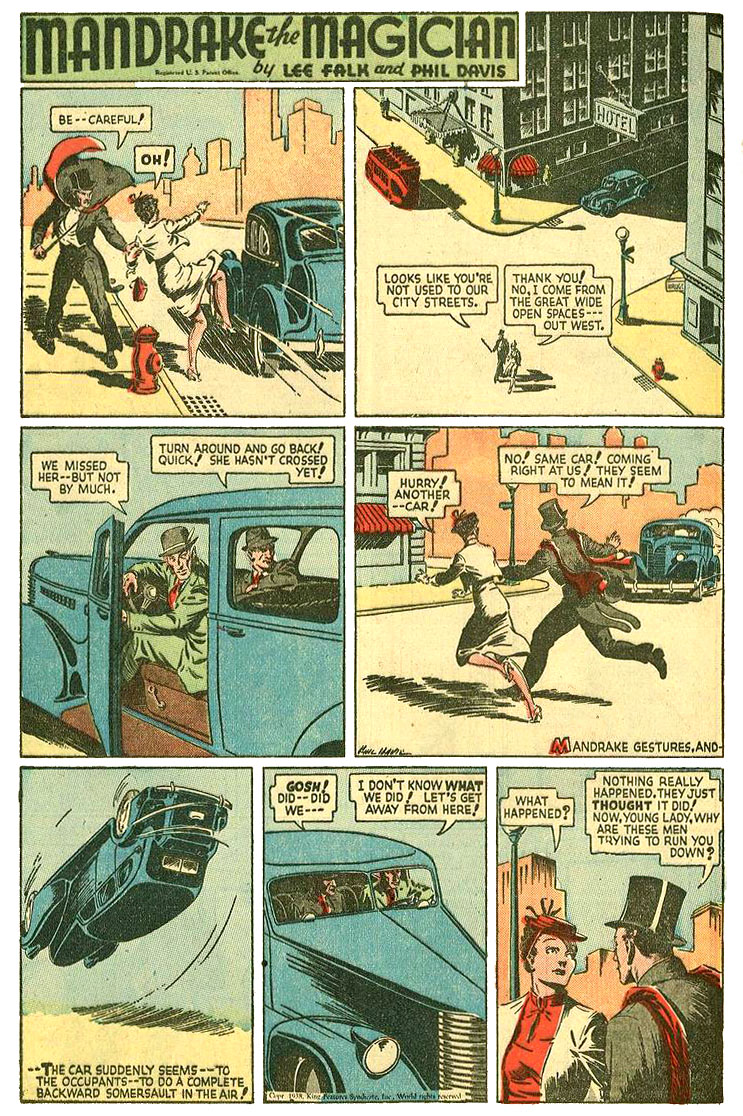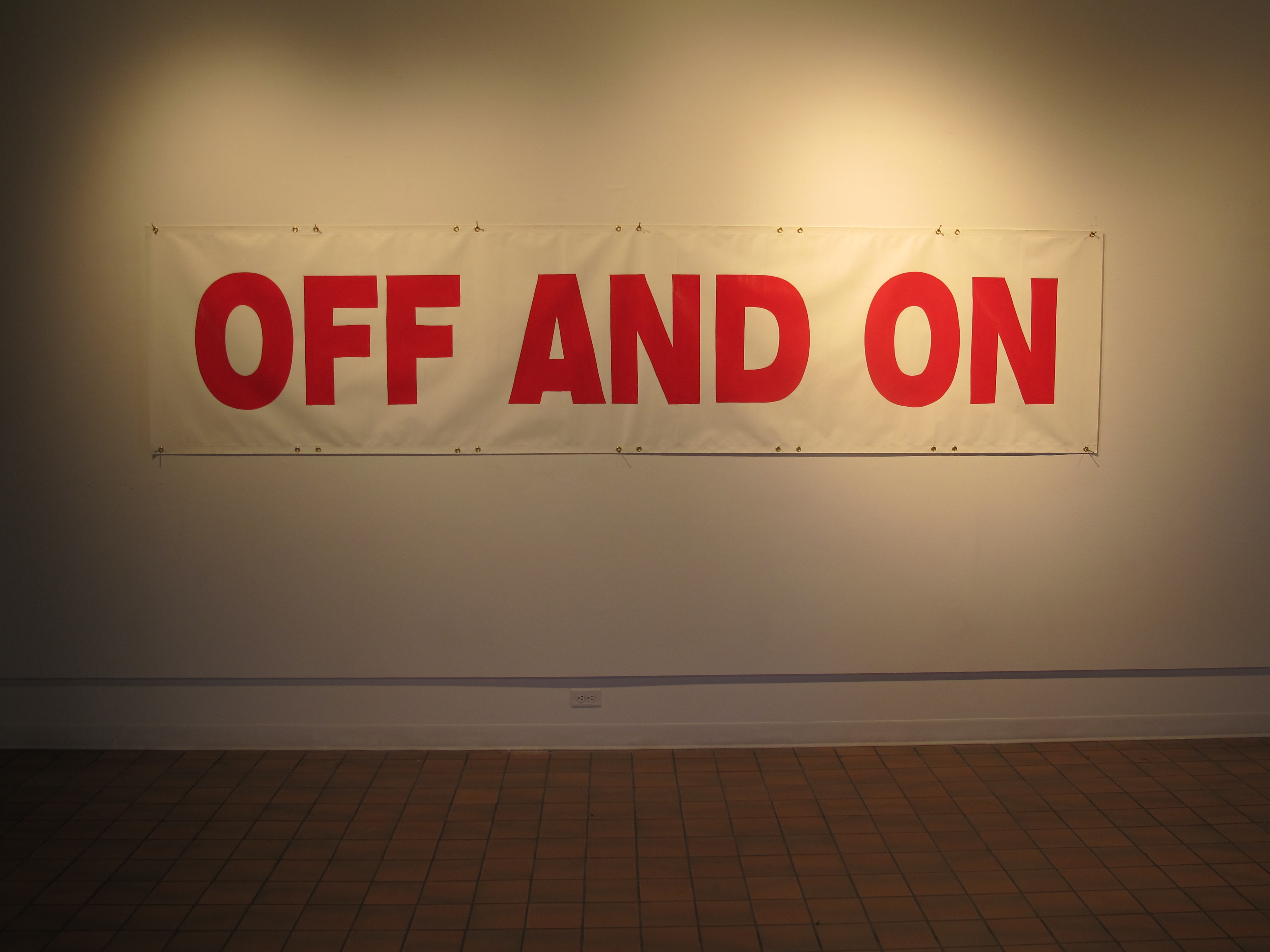IAIN BAXTER&: Elseness
Posted: March 26, 2013
IAIN BAXTER&: Elseness
David Bellman
Research Curator
__________
1. Imaginal Margin
“Sensing + Selecting + Perceiving = Seeing”
– Aldous Huxley (1943)
Phil Davis, Mandrake the Magician (October 30, 1938). MANDRAKE- © 1938 KING FEATURES SYNDICATE, INC. WORLD RIGHTS RESERVED.
“MATTER + ECOTYPE + TERMINATION SIGHT = VSI [Visual Sensitivity Information]
– Iain Baxter (1969)
“There is something that is always overlooked in this present age, something that has to do with the working, and the wanting to work, of the spiritual world. It is this: that total spiritual activity must include the creative activity to be found in human thought and feeling.”
– Rudolf Steiner (1924)
“To inspire everybody with the visual experience that we are united by cooperative progress alone is the job of the artist of the future. Needless to say, the activities of this artist can no longer terminate in the ‘work of art’.”
– Herbert Bayer (1947)
“When the creative self-changeability of all processes of modern life becomes the soul of artistic activities, the ‘work of art’ cannot possibly remain in the center of art life. … It is evident that life tends toward a visual language consisting of concrete transitory acts that actually improve life, and tends away from any fixed form, from any monumentality.”
– Alexander Dorner (1947)
__________
2. Contexture
Iain Baxter (N.E. Thing Co.) / IAIN BAXTER&, "Imaginary Thing," 1969 / 2013:
IMAGINARY THING
Location – Earth center.
Square chamber in center of earth. ... A square chamber 100 x 100 x 100 miles created, lined, and insulated to keep the temperature at approximately 70 degrees Fahrenheit. ... A spherical bladder of urethane vinyl, 100 miles in diameter, is inserted into the square chamber and inflated.
[This text was submitted to CONCEPT ART – an exhibition at Städtisches Museum Leverkusen, Germany, 1969.
In 1936, Danish Seismologist Inge Lehmann (1888-1993) theorized that "Earth's Center" consisted of a solid inner core surrounded by a liquid outer core. Her "hypothesis" was confirmed in 1970.]
“Society occupies the circumference; the individual is at the center; from the center to the circumference are arranged, like so many ever-widening concentric circles, the various groups to which the individual belongs. From the circumference to the center, as the circle grows smaller, obligations are added to obligations, and the individual ends by finding himself confronted with all of them together. Thus, obligation increases as it advances; but, if it is more complicated, it is less abstract, and the more easily accepted. When it has become fully concrete, it coincides with a tendency, so habitual that we find it natural, to play in society the part which our station assigns to us.”
– Henri Bergson (1932)
“Nature is at the first day; it is there today.”
– Maurice Merleau-Ponty (1964)
“Apart from the ideal gardens of the past, and their modern counterparts, national and large urban parks, there are the more infernal regions – slag heaps, strip mines, and polluted rivers. Because of the great tendency toward idealism, both pure and abstract, society is confused as to what to do with such places. Nobody wants to go on a vacation to a garbage dump. Our land ethic, especially in that never-never land called the “art world” has become clouded with abstractions and concepts.”
– Robert Smithson (1972)
__________
3. Continuative Moment
Iain Baxter, OFF AND ON, acrylic on canvas, ca. 2000. Installation view. (Photo: IAIN BAXTER&.)
‘The real content of a work is the vision expressed in its way of forming (modo di formare). Any analysis of the relationship between art and the world will have to take place on this level.”
– Umberto Eco (1962)
“Unless there is a constant and a recurrence, there is no depth in the matrix.”
– Vernon Watkins, 1906-1967 (n.d.)
IAIN BAXTER&, Untitled, mirror [framed] and adhesive letters [attached], 2013. Installation view, 2013. (Photo: M. Cynog Evans, CAUSA Archives.)
“An originary world is not an any-space-whatever (although it may resemble one), because it only appears in the depths of determined milieux; but neither is it a determined milieu, which only derives from an originary milieu.”
– Gilles Deleuze (1983)
“People nowadays cannot detach themselves from their habitual concepts. Yet this is the most important task today: not simply to believe that we have to change our outer relationships but to understand that we must transform our ideas, our concepts, radically. We need different heads on our shoulders.”
– Rudolf Steiner (1919)
“Place and framing are all-important. The various ways we move through space, capture it, think about it … when you’re standing in a particular place yourself you’re actually placed there as a specific person or piece of information. The framing speaks to how we speak of our existence.”
– IAIN BAXTER& (2011)
"Chiba Garden, North Vancouver – Spring, 2013." (Photo: M. Cynog Evans, CAUSA Archives.)
[This traditional Japanese garden –:completed in 1986 – was designed by landscape architect Toshimasa Ito.]
__________
March 26, 2013
__________


![IAIN BAXTER&, Untitled, mirror [framed] and adhesive letters [attached], 2013. Installation view, 2013. (Photo: M. Cynog Evans, CAUSA Archives.)](images/blur.jpg)

March 26, 2013 at 1:15 pm
Moving from the “circumference ” to the center may be adding layers of obligation , but if society is the circumference and the core is the individual the energy of motion must be continuous and in both directions. The layers of obligation should be at there height at the circumference where their weight can be shared by the whole. “I” am a complete circle.